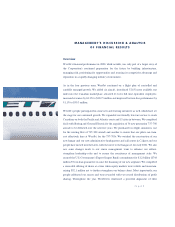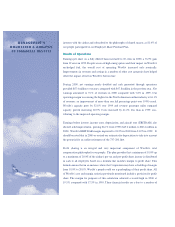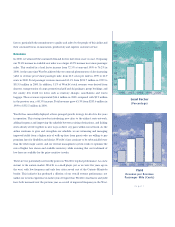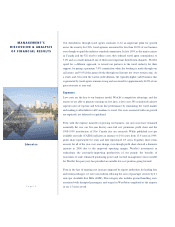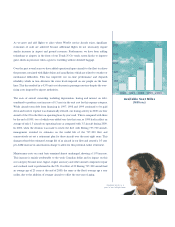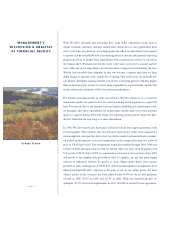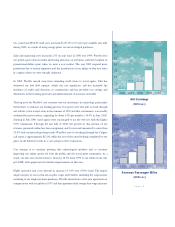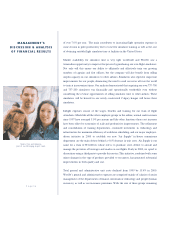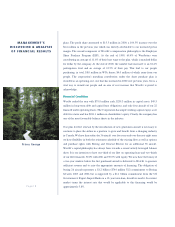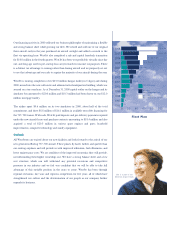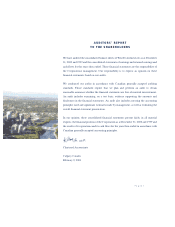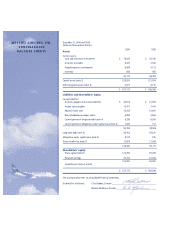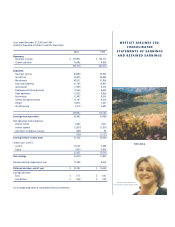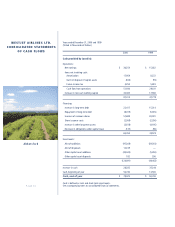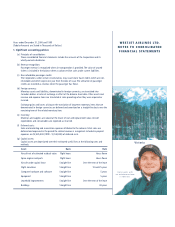Westjet 2000 Annual Report Download - page 18
Download and view the complete annual report
Please find page 18 of the 2000 Westjet annual report below. You can navigate through the pages in the report by either clicking on the pages listed below, or by using the keyword search tool below to find specific information within the annual report.
MANAGEMENT’S
DISCUSSION & ANALYSIS
OF FINANCIAL RESULTS
Page16
of over 7.0% per year. The main contributor to increasing flight operation expenses is
some erosion in pilot productivity due to travel for simulator training as well as the cost
of obtaining suitable flight simulator time at facilities in the United States.
Market availability for simulator time is very tight worldwide and WestJet saw a
tremendous opportunity to improve this process by purchasing our own flight simulators.
Not only will this ensure our ability to efficiently and effectively train our growing
numbers of captains and first officers, but the company will also benefit from selling
surplus capacity on our simulators to other airlines. Simulators also represent important
improvements for our people, eliminating the need to send our crews all over the world
to train at inconvenient times. Our analysis demonstrated that acquiring our own 737-700
and 737-200 simulators was financially and operationally worthwhile even without
considering the revenue opportunities of selling simulator time to other airlines. These
simulators will be housed in our newly constructed Calgary hangar will house these
simulators.
Inflight expenses consist of the wages, benefits and training for our team of flight
attendants. Much like all the other employee groups in the airline, normal scale increases
since 1997 have averaged 5.0% per annum and like other functions these cost increases
have been offset by economies of scale and productivity improvements. The refinement
and consolidation of training departments, continued investment in technology and
infrastructure for maximum efficiency of workforce scheduling, and our major employee-
driven initiative in 2000 to establish our new “Air Supply” in-house commissary
department are the main drivers behind a 4.6% decrease in unit costs. Air Supply is our
name for a team of WestJetters whose role is to purchase, store, deliver to aircraft and
manage the provision of beverages and snacks on our flights. Early in 2000, we opted to
discontinue using a third party to provide this service.This initiative, combined with some
minor changes in the type of products provided to our guests, has generated substantial
improvements in both quality and cost.
Total general and administrative unit costs declined from 1999 by 15.4% in 2000.
WestJet’s general and administrative expenses are comprised mainly of salaries of senior
management of the departments of finance, information technology and people (human
resources), as well as our insurance premiums. With the size of these groups remaining
Maika, Dan and Rebecca,
part of our Winnipeg airport team.





